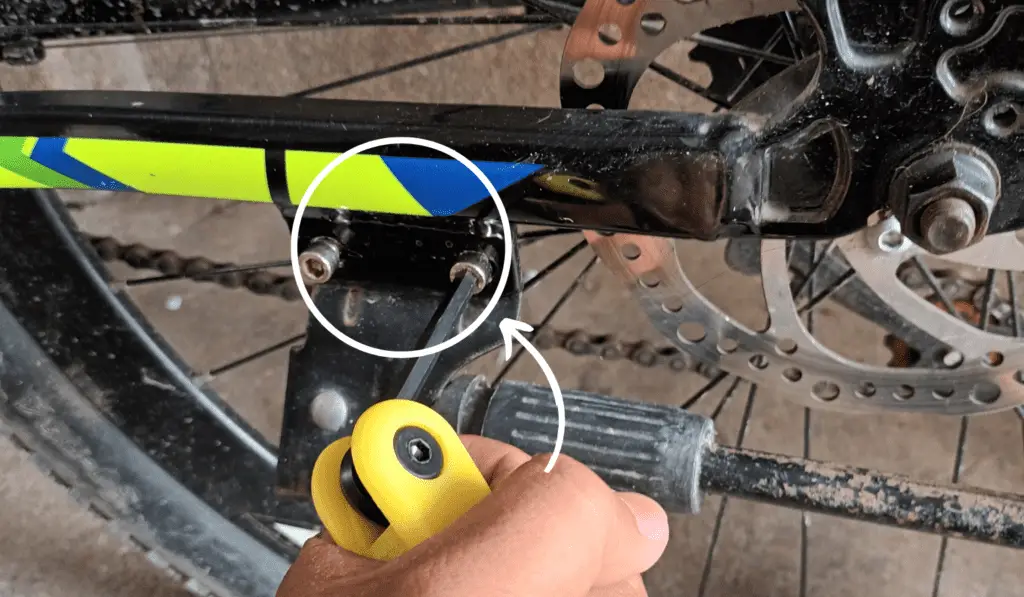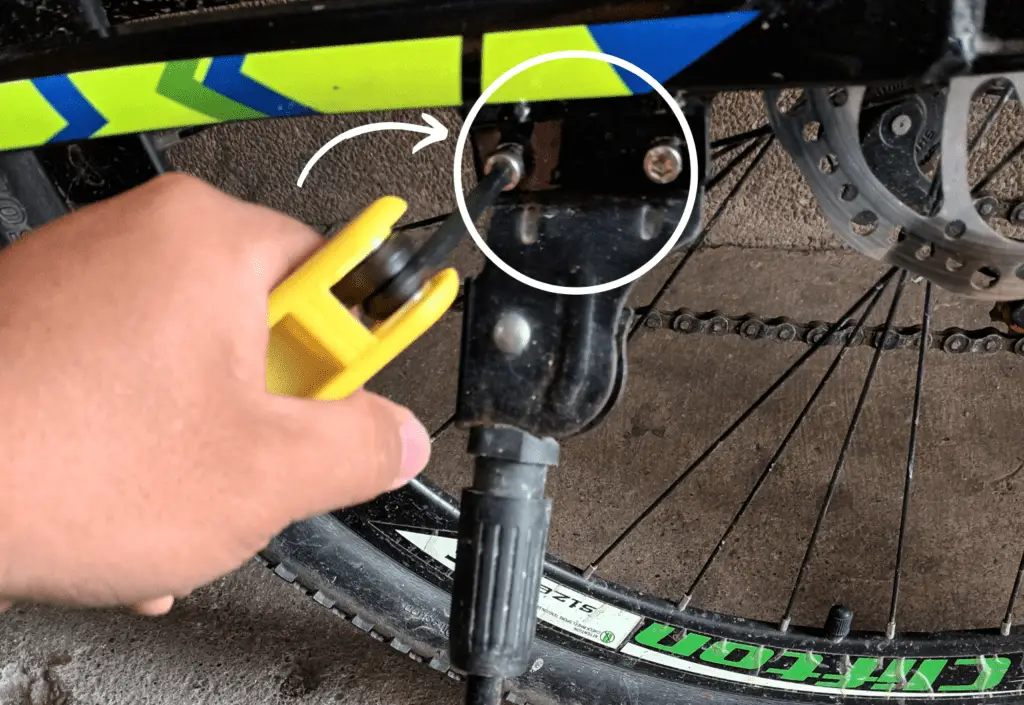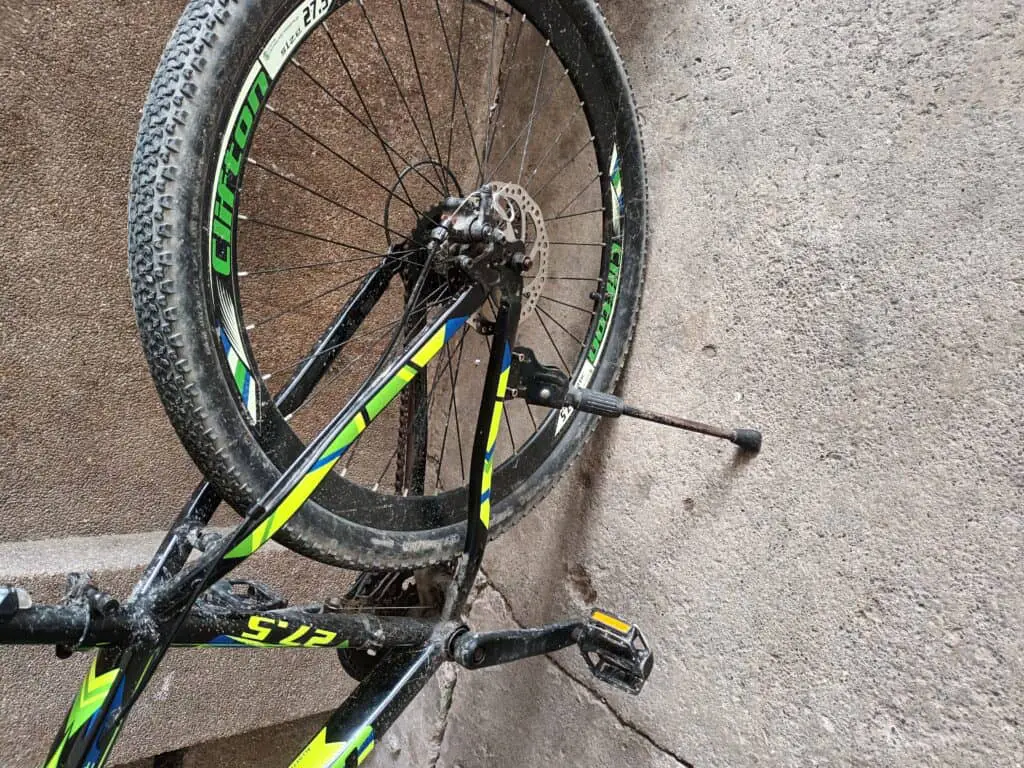Last Updated on October 2, 2022
A kickstand is a kind of device that you install on your mountain bike to keep it upright when parked.
What we normally do when we park our bikes is to make them lean against something to keep it up and save space. With a kickstand installed, we only need to flip the stand down and lean the bike on that side.
History of Bike Kickstands
Kickstands have been around for centuries and have been around since the dawn of biking. The earliest form of kickstands was noted to be originally designed by a certain Albert Berruyer in the late 1800s.
Since its inception, it has been reinvented and innovated many times into what it is now. Kickstand designs and their mounting points vary as well.
However, in the 1970s, kickstands weren’t as popular as it was then. Bikes became lighter and riders were concerned that kickstands only add weight to their rig.
Types of Kickstands
Several types of kickstands were invented over time.
Side stand
The first and the most common one is the side stand kickstand. This is a simple leg that flips out on one side that allows that bike to lean while balancing the bike in an upright position.
This type of kickstand is normally mountain on a bike’s chainstay which is directly behind the bottom bracket. Some types can be mounted on a bike’s seat stay.
This depends on the specific stand’s ideal mounting point. However, those that are mounted right behind the bottom bracket can either be clamped or bolted on the chainstay and is the most common mounting point, especially for mountain bikes.
Center stand kickstand
Although this type of kickstand was originally developed for bikes, nowadays, you can see this as a common feature among motorcycles. This type of kickstand is composed of a pair of legs or a single bracket that you can flip downwards which will, in turn, lift the rear wheels when in use.
How do you install a kickstand on a mountain bike?

Through the years especially with newer mountain bikes, kickstand have become outdated. Although their purpose still stands, the idea of having one hanging at the side of your bike is not much of an inviting thought, especially for the modern mountain biker.
But if you do have a special purpose for it, like if you are using your mountain bike as your daily commuter, then there are several ways to mount a kickstand to your mountain bike.
Bolt-on stands
There are still mountain bikes that come with a special provision under the chainstay for a kickstand. For this type of mountain bike, you can easily install bolted kickstands on the chainstay mount.

This though might not be so common and if you are looking for a mountain bike that comes with one, just look at the left side just below the chainstay. You will not miss it.
The kickstand may come with the mountain bike once your purchase them but you also have the option of purchasing the stand separately.
Clamp-on stands
If your mountain bike does not have a mounting point for kickstands, then a clamp-on type stand may be the best choice for you. What you can do is clamp the kickstand mount directly on the left chainstay of the bike.
If you are wondering why it is on the left that is because the bike’s drive train is on the right side.
Axle-mounted kickstands
For older bikes that come with wheels that are secured by tightening a nut, older model kickstands can be installed together with the axle. What you do is tighten the kickstand mount together with the nut that secures the rear wheel.
This may be the least favorable option since modern mountain bikes already come in thru-axles or with quick-release hubs on the rear wheel and there is no longer any mounting point for this kind of kickstand.
Why do people install kickstands on their mountain bikes?

The most common reason why people do this is convenience. Just like any motorcycle, you can not just park it somewhere and make it lean on the next car that is a park there or along a wall.
If your mountain bike doubles as your commuter then it is way easier to have a kickstand especially if the establishment that you go to does not have a decent bike parking area.
Kickstands also make storing your bike at home after mountain biking easier rather than have it lying around in the garage or leaning it against a wall. Leisure bikers normally would opt to have a kickstand as well.
Having one makes it easier for you to keep your bike upright while it is parked during your leisure rides or bike camping trips.
Why cyclists do not install a kickstand on their mountain bike?
This is fairly easy to answer. That is because having a kickstand seems a little out of place for the modern mountain biker.
It is so rare to see bikers hitting the trails with a kickstand on their bags and it is for a good reason too. Kickstands tend to add more weight to your bike. And if you are a cross country rider, having one hanging around just will not cut it.
It is aesthetically annoying and may be a cause of freak accidents as well. When you are out hitting aggressive trails, you do not want your kickstand to get in the way as you maneuver around features in the trails.
Mounting is also a problem for modern mountain bikes. If your bike frame is made out of carbon fiber, having something clamped on its surface may diminish the quality of your carbon chainstay and would only add stress to the bike frame.
Carbon fiber does not like to be clamped as well. Because compared to aluminum alloy, carbon tends to break under immense pressure.
Practicality of Kickstand Use

Kickstands may still be of use after all. Modern e-mountain bikes tend to be heavier than even the sturdiest downhill rig.
And if you use it on trails or leisure riding, some people may find it hard to pick it up during rests. That’s why some of today’s e-mountain bikers are on the lookout for an e-mtb specific rear mount kickstand connected to a kickstand bracket and pedal gear shift cable or rear shift cable near the bike tire.
And besides, these e-mountain bike riders do not care about the added weight a kickstand may add to their rig. For them, the upside of owning one outweighs the reason why other mountain bikers do not want a mountain bike kickstand on their bike.
And besides, if the need to ride aggressively presents itself, you can always remove the kickstand to make it a safer ride overall. As discussed earlier in the article, having mountain bike kickstands seems to be a viable option for those who use their bikes as daily commuters.
As we know, finding a place to park is becoming a challenging task. And due to the new normal and the boom of biking in today’s society, having a kickstand may be a good thing if parking is an issue for you.
Conclusion
Kickstands have gone a long way and although they may be out of style, they still do have a place in modern mountain biking. Knowing how to install a kickstand is also an easy task and mounts are provided as an option to those who do need them.
At the end of the day, the use of a mountain bike kickstand will boil down as the rider’s preference. It may not be the same for those who go mountain biking and spend most of the time on trails, but knowing that you can always purchase a kickstand for your bike is a good option to have.
